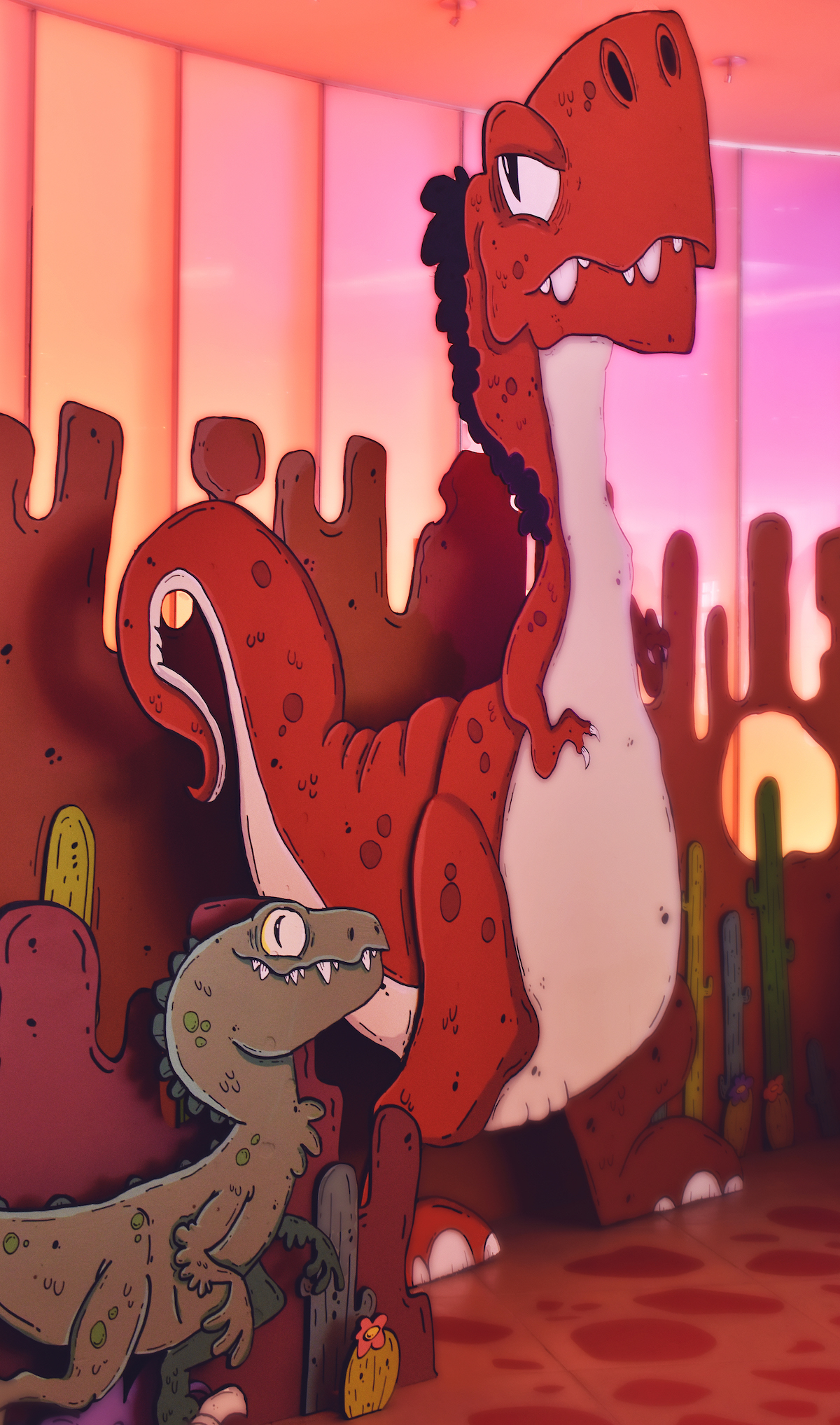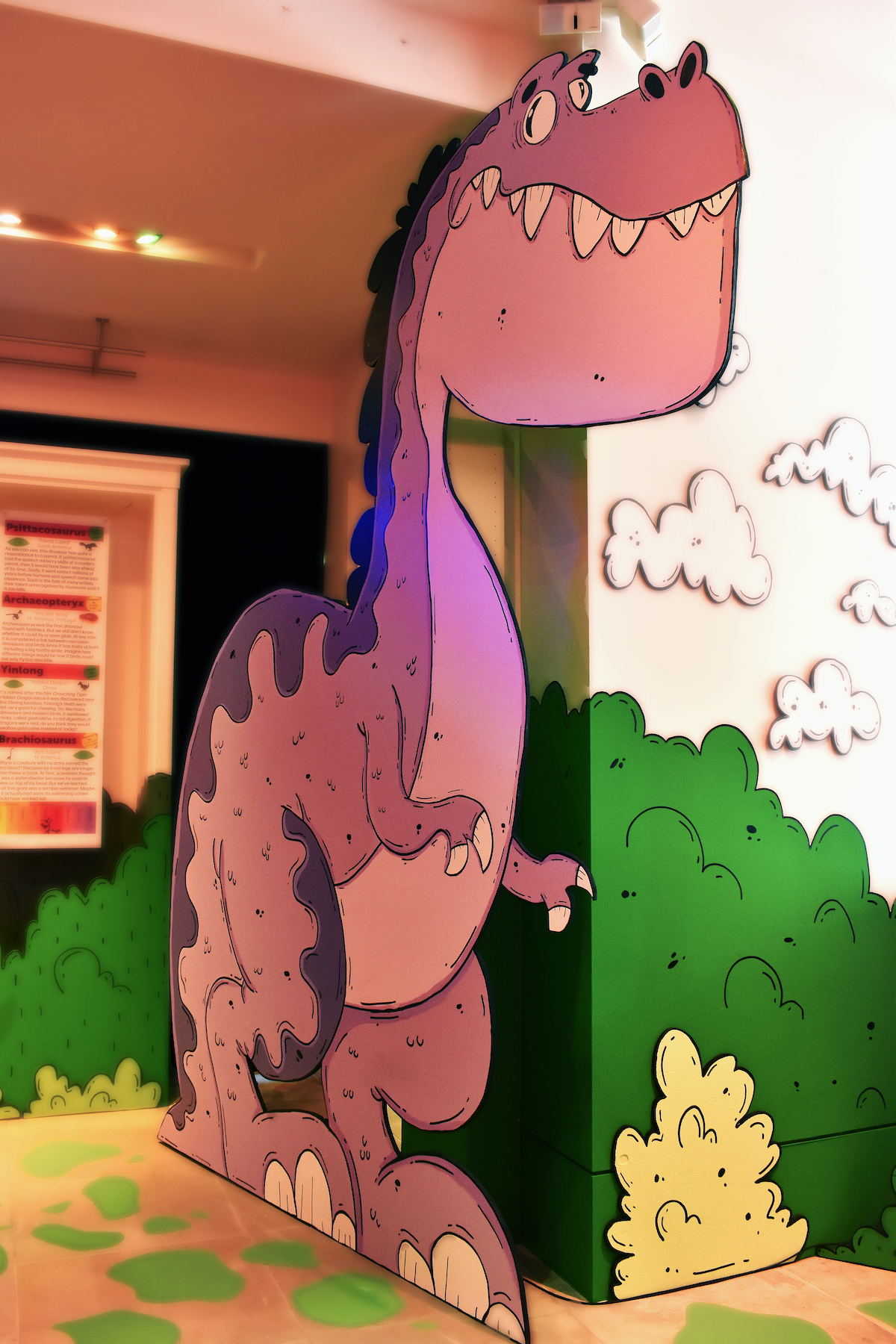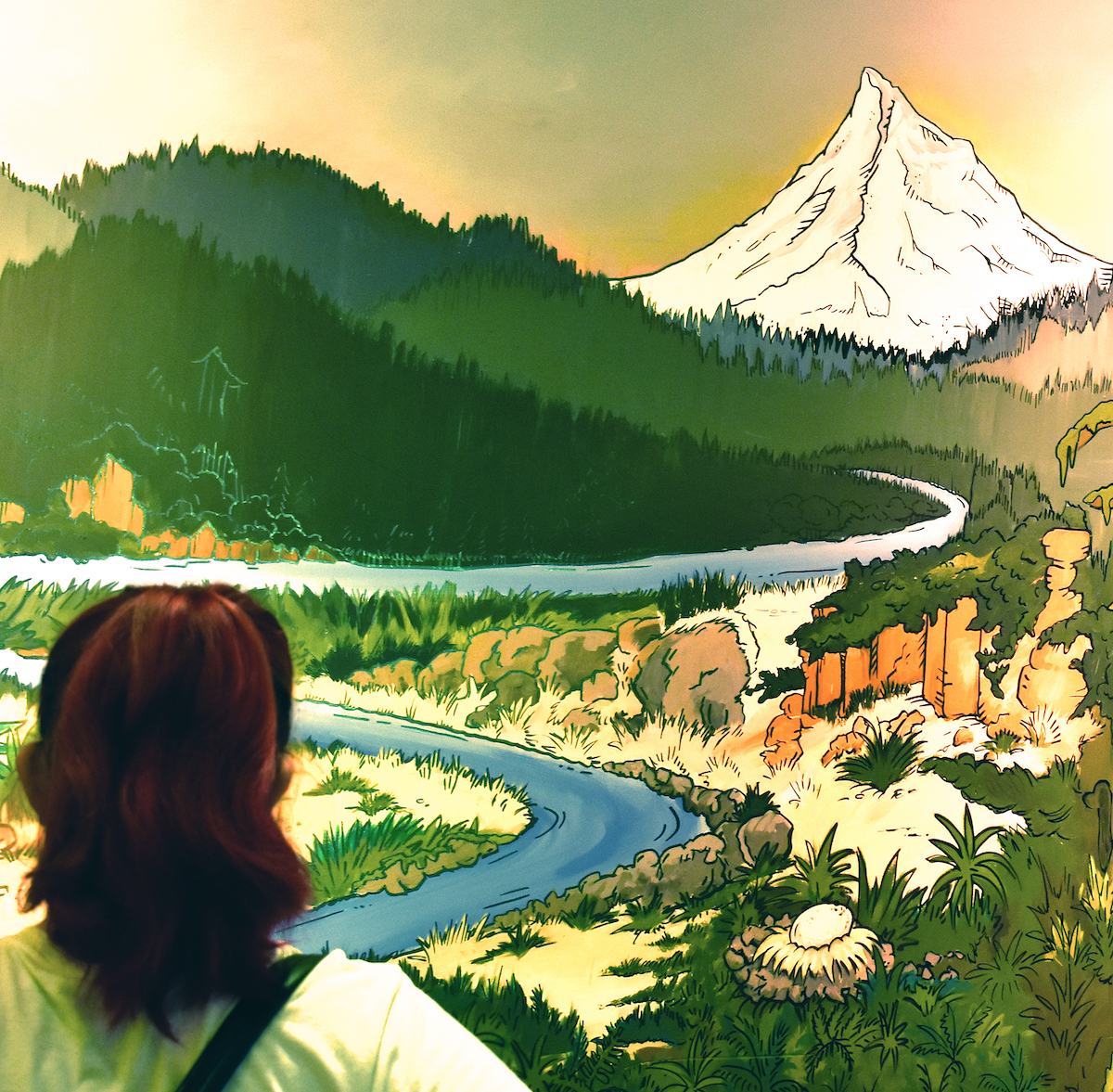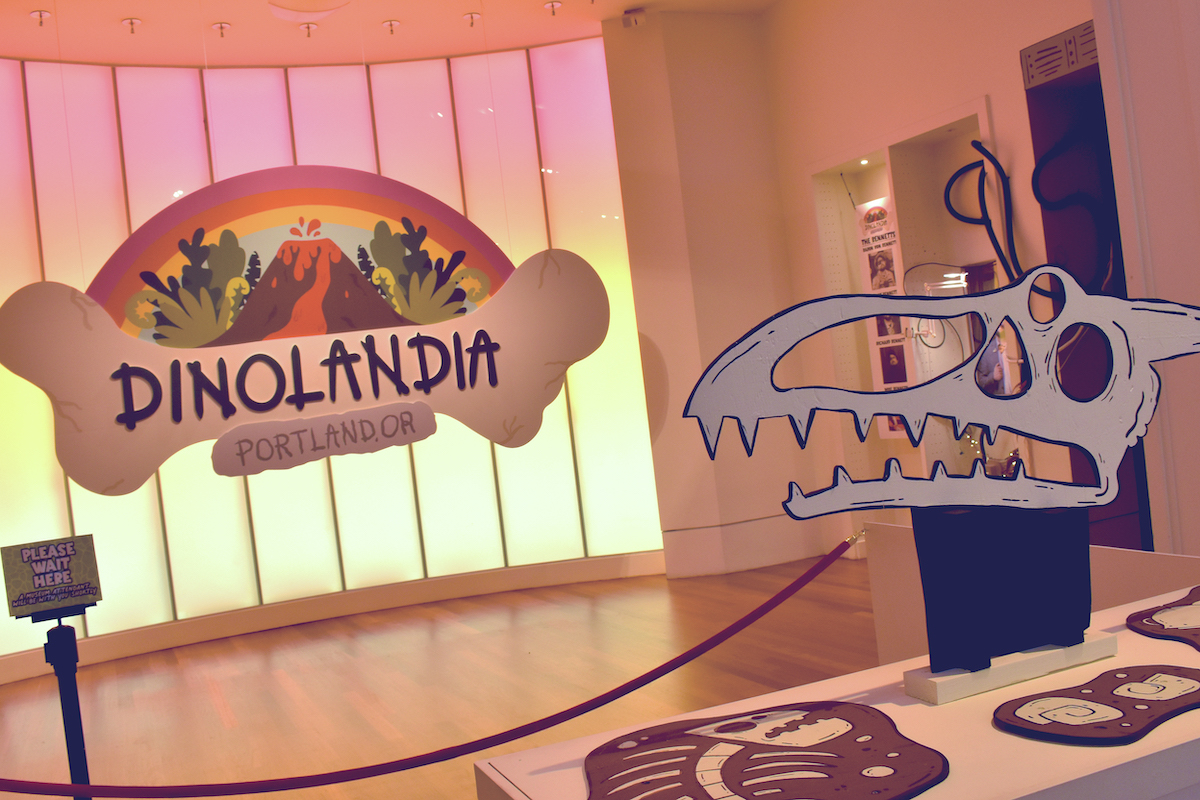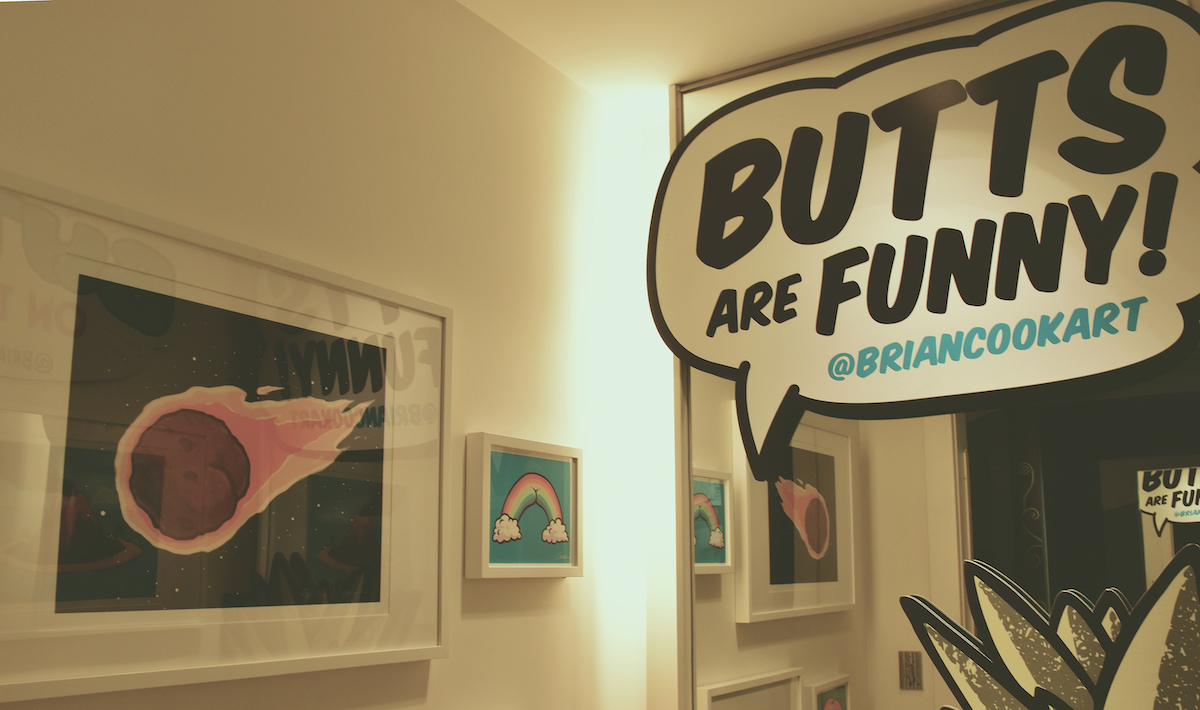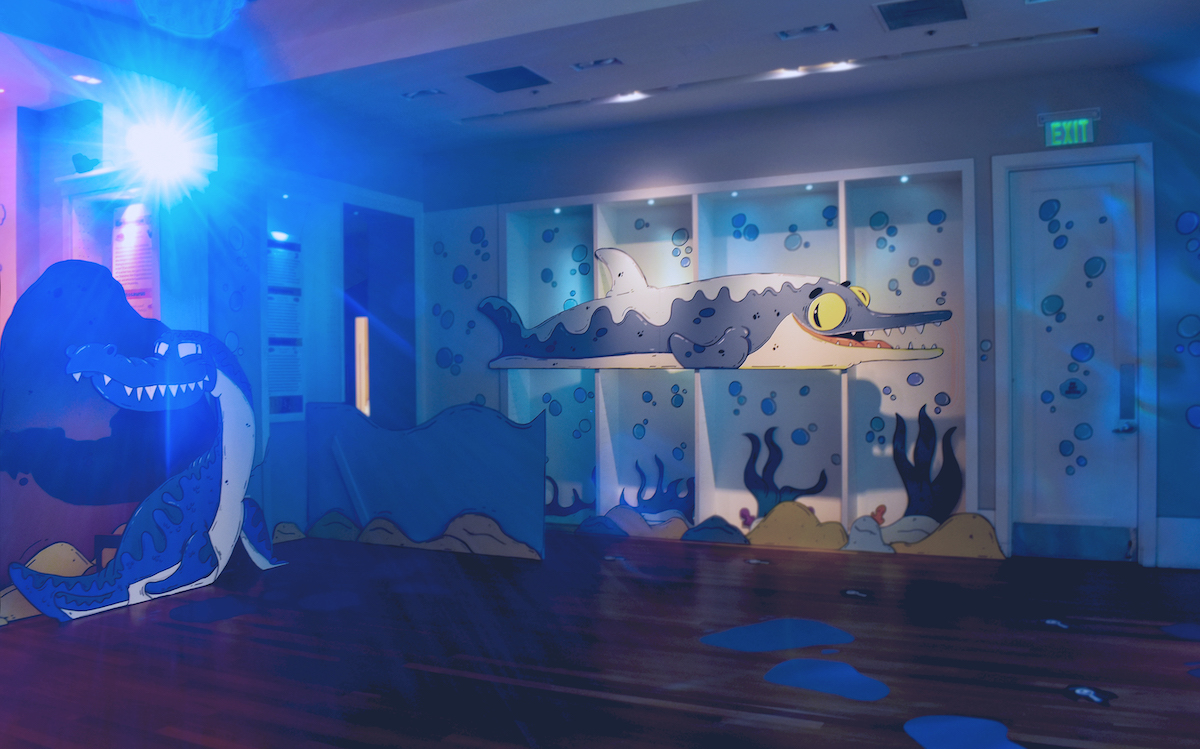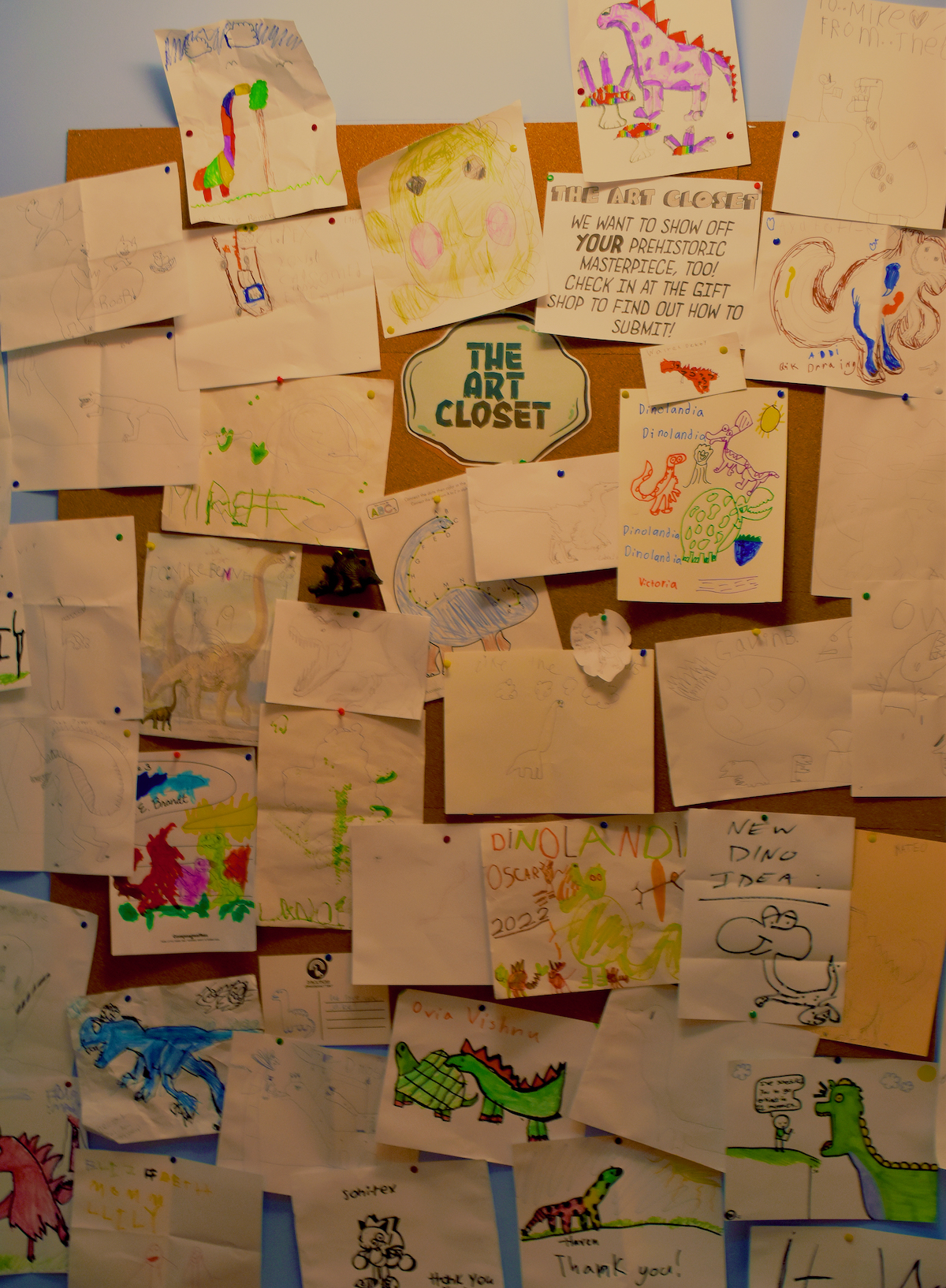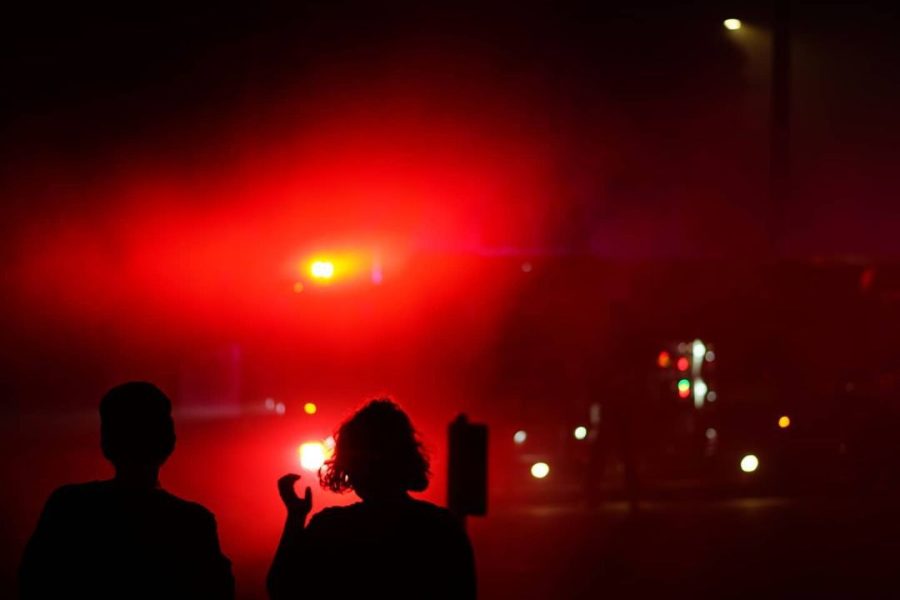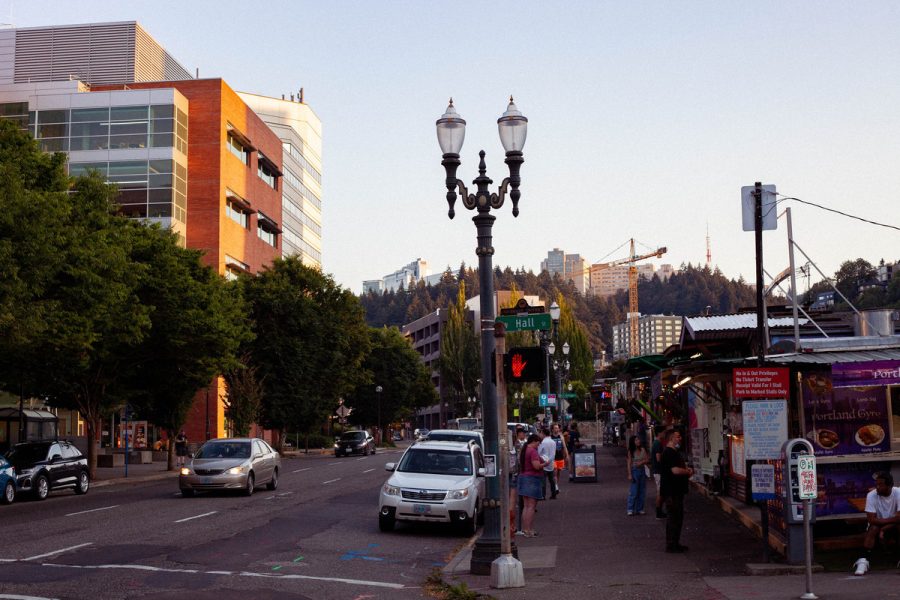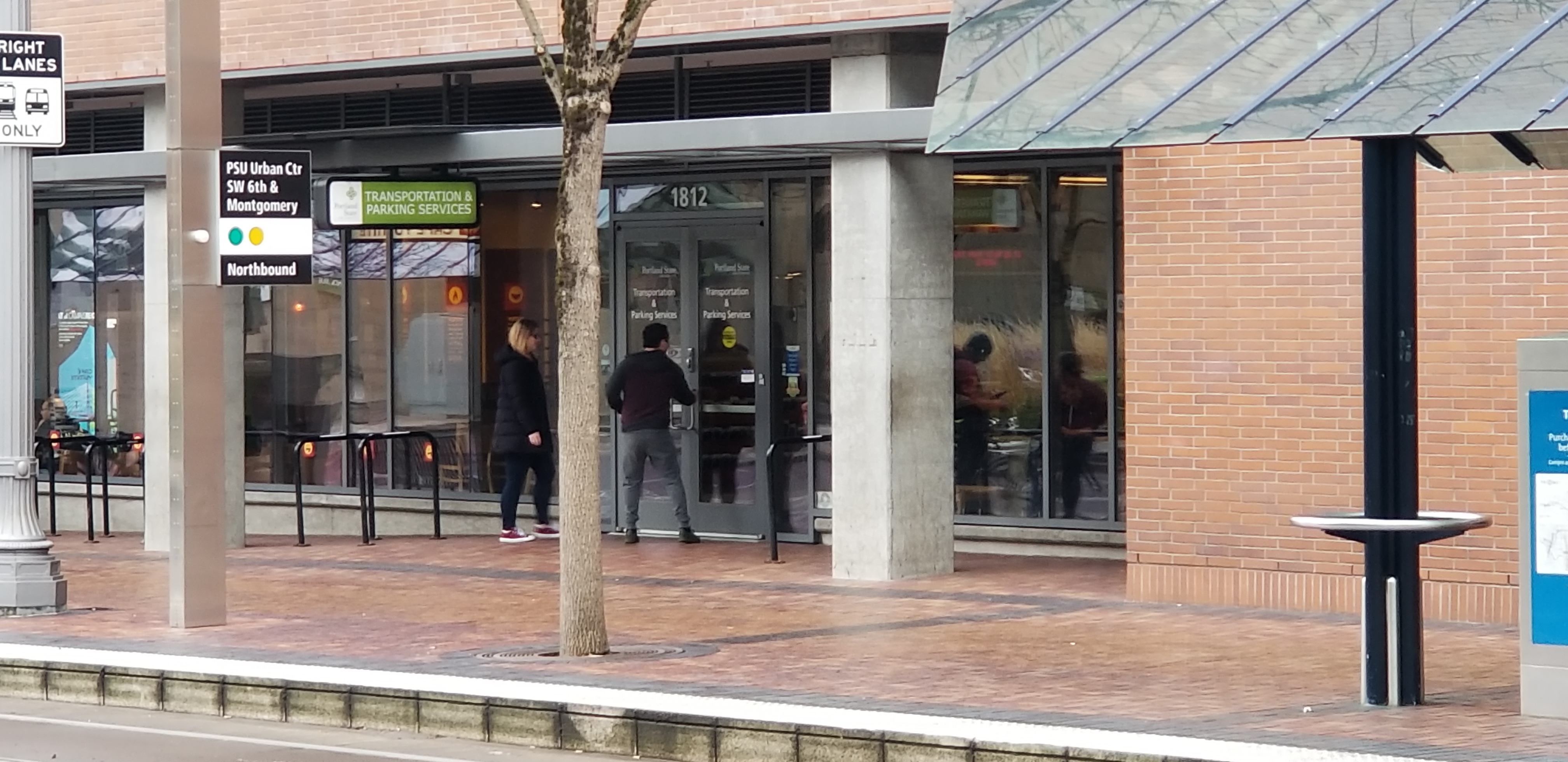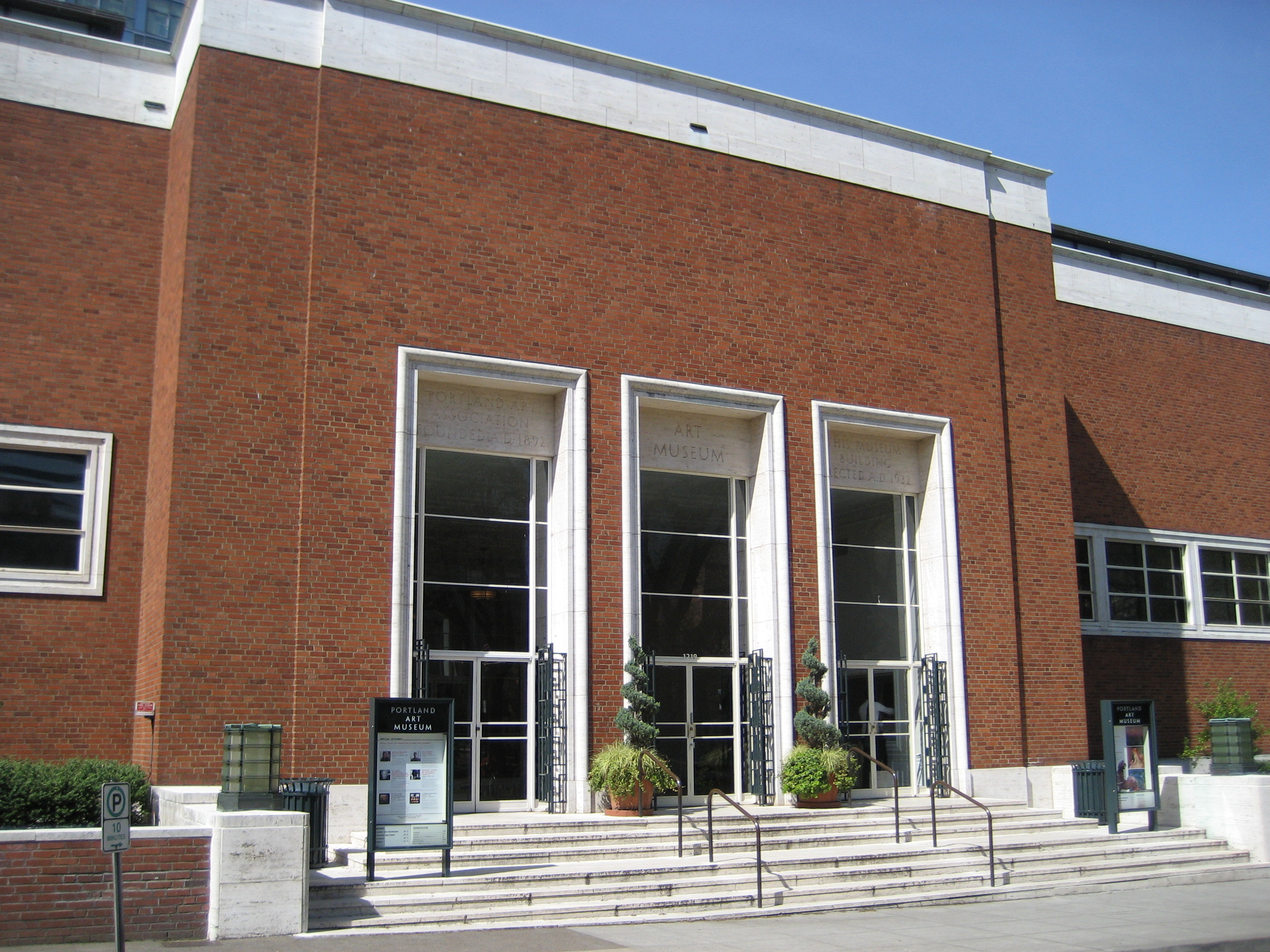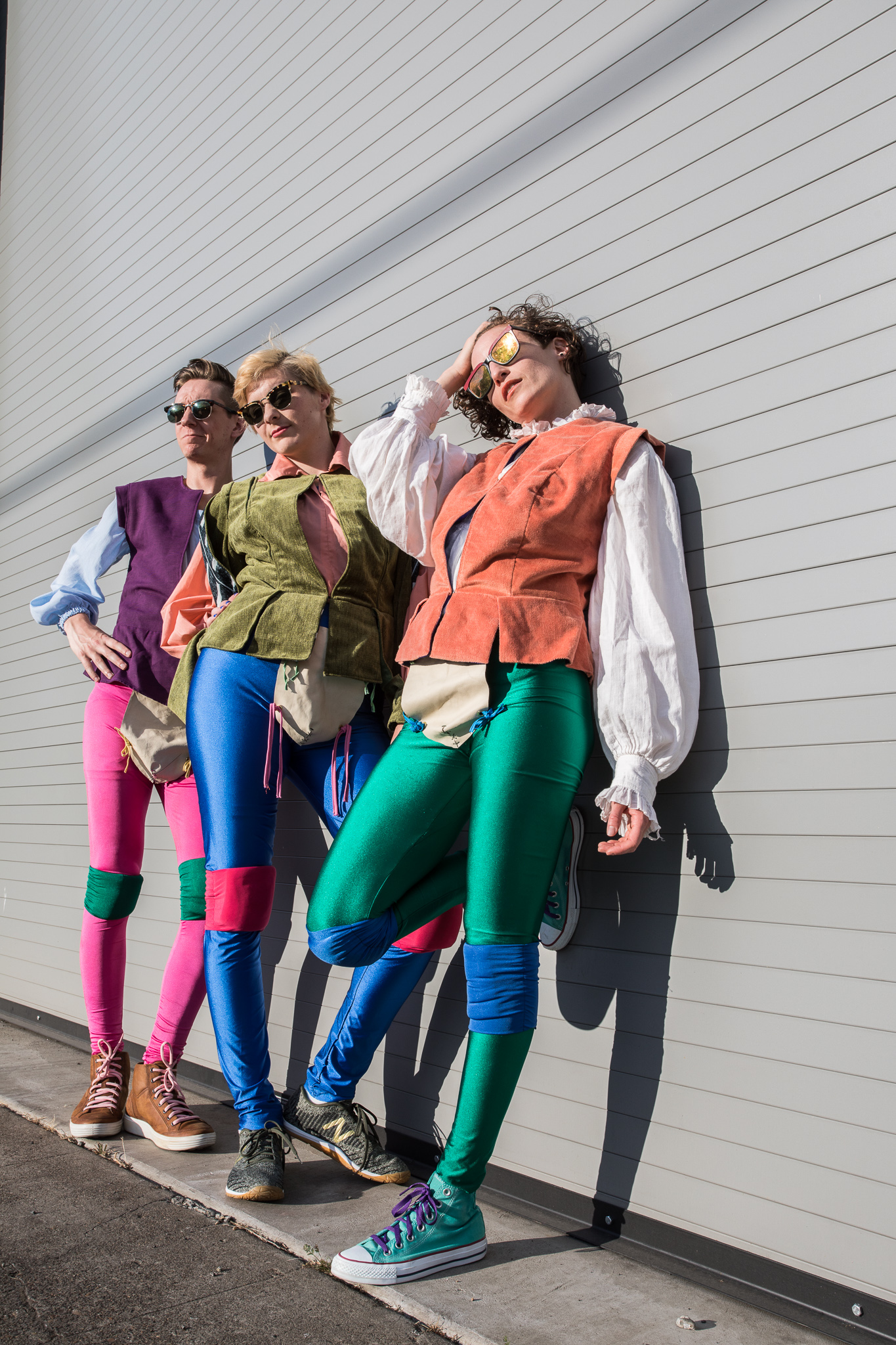Mike Bennett’s Dinolandia exhibit, which is showing in Portland until Sept. 10, appeals to the inner child in its visitors, presenting vibrant, fun cartoon dinosaurs which come to life as you travel back in time to the prehistoric era. One of the best parts of being a child is one’s ability to imagine, question and explore the world unfettered by stress and unbound by reality—to understand the world as it is and as it could be within the invention of one’s own imagination. Bennett’s exhibit aims to revive this feeling in his visitors, as well as to spark joy and teach both the kids and the kids-at-heart about dinosaurs.
In the course of viewing the breathtaking artwork and educating oneself about dinosaurs, one might question where the idea for this exhibit originated.
According to Erin Marshall, a staff member at the Dinolandia museum, Bennett got inspiration from another dinosaur museum he visited while on a road trip with his wife. In reference to the museum Bennett visited, Marshall said, “There were just massive dinosaurs outside, and [Bennett] was like, I wanna do that, but I wanna do it with plywood and bring it to Portland.”
Bennett did exactly that, and while some might not understand the allure, Portlanders have embraced Bennett’s art with unfettered abandon. “Outside looking in, Portland’s pretty weird,” said staff member Izzie LaFleur. “So, if there was a good place for plywood dinosaur art to be popular, it would be Portland.”
One characteristic of Bennett’s art is the focus on using reclaimed plywood and recycled paint in the creation of his cutout art. While an exhibit as large as Dinolandia cannot realistically be made entirely out of recycled materials—as confirmed by Dinolandia staff—there is still a momentous focus on making art as sustainable as possible within this exhibit.
“I think especially living in Portland—we’re so focused on [sustainability], and I think it’s cool that [Bennett]… built something so huge, [and] actually pulled from that,” Marshall said.
It appears that a primary reason for Bennett’s ability to focus on sustainability is due to his coordination with the vast Portland art community.
“With anything being mass produced, there’s tons of waste,” LaFleur said. “But I noticed that [Bennett] really is good about [sustainable practices]. Because of his community involvement, he’s got so many connections to get things like the paint and the plywood. It’s really cool how he’s been able to infiltrate the community and get community support for this.”
As an outsider moving to Portland, it was difficult for LaFleur not to know anyone other than her partner. However, being welcomed into Portland’s extensive art community through her work with Bennett made her feel connected to a new community.
“We are very recognizable,” LaFleur said. “I have people come in all the time, and they’re like, ‘I saw you in your red jumpsuit, walking your dogs,’ and I’ve had people be like, ‘Dinolandia? Is that Mike Bennett?’ It’s definitely cool to be an outsider, getting to kind of like a community role as well. It really gave me a sense of a little, like, home and community connection. And that’s the hard part of going anywhere new, right? Is finding a community of like-minded folks.”
“This is definitely my kind of place to be,” LaFleur said, summarizing her experience working with Bennett and finding her community. “It’s very safe, very fun and inclusive.”
The safety and inclusivity within the museum were evident. From requiring and providing masks for all guests, to the bathrooms being gender-neutral, to pronoun pins supplied to all the employees—as a non-binary, queer human, this place felt like one of the most welcoming and safe spaces I have stepped into in a very long time.
“Most of our people who work here are non-binary or gender-nonconforming, and [Bennett] has made a huge effort to make sure that they are being addressed the way they should be and that they are in a safe space as well,” LaFleur said. “And that’s super cool. You know, I grew up in the South. Where it’s just not progressive at all and to, to come to a place where that’s the norm and where that’s the standard and that people are being held to that standard is just really refreshing.”
While the vision behind this project was Bennett’s, Dinolandia was and is a combination of a community of artists and creators coming together to create joy and bring life.
“A huge group of people… volunteered and helped put everything together for about three or four months…” LaFleur said. “The artist’s hallway [or the entrance to the cave in the exhibit] are all different local artists. Not necessarily ones that work here with us. That was really important to Mike—also getting community involvement.”
Even the young, budding artists have a place to exhibit their art. “We also have Mike’s mailbox,” LaFleur said. “Where kiddos can bring their own art to be put into the exhibit. That’s something really important to [Bennett], is to make sure kids are inspired and kids are involved and feel encouraged to also create.”
Although there is something for everyone at the museum, the design for children—especially those who are creative, artistic and imaginative—is particularly impressive.
LaFleur noted her own desire for a space such as this as a kid. “I was a doodler in school,” she said. “And so, I remember getting in trouble for the doodles, and that can really stifle a kid’s imagination. That can make them feel like, oh, if I do this, it’s not a real thing. So it’s good to encourage it in a fun and safe space where they can come and see it after.”
Dinolandia provides that space to create, be inspired and embrace joy and happiness in a moment where we could all use a bit more of that. “I think Mike is labeled as, like, a public joy creator—I think that’s essentially what he’s done here is that everybody who leaves, leaves happier,” Marshall said.
This happiness is not exclusively limited to children—adults especially can receive something from this experience. We can go back in time. We can become young again and embrace the parts of us that desire fun, play and joy. As adults, we need to dust off our childlike imagination more often, slow down and embrace the joy, even if it sometimes feels impossible.
“Honestly, this place is fun for adults,” LaFleur said, “It is. There’s tons of really cool information… It speaks to the inner child while being kid-friendly while also being adult-friendly, which is so hard to find. And I feel like there’s a big movement right now, you know? Healing our inner child and not being ashamed of our inner child. I know that’s something I definitely have been working on personally, and I think that this is a great place for it.”

